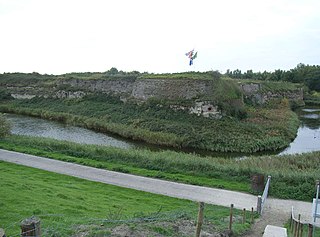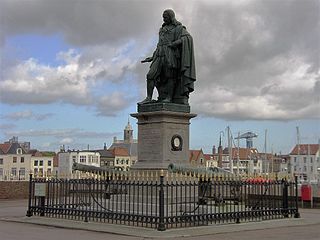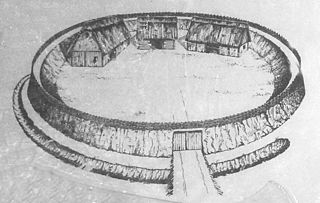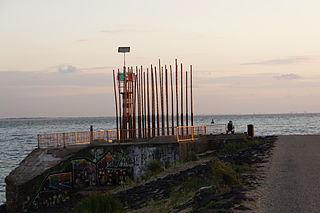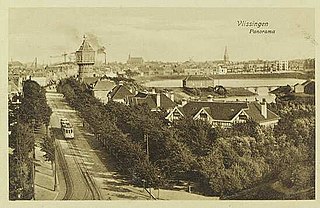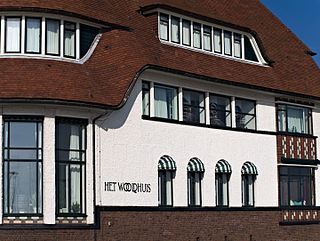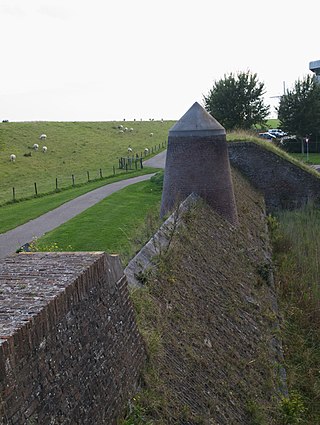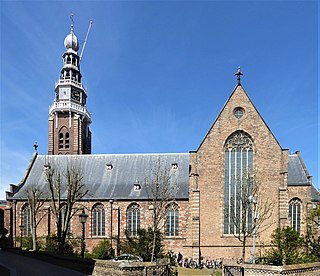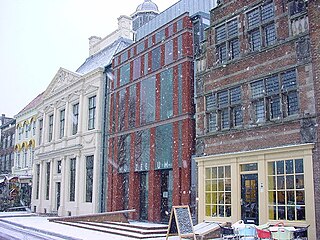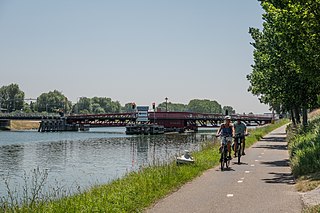14 Sights in Vlissingen, Netherlands (with Map and Images)
Legend
Welcome to your journey through the most beautiful sights in Vlissingen, Netherlands! Whether you want to discover the city's historical treasures or experience its modern highlights, you'll find everything your heart desires here. Be inspired by our selection and plan your unforgettable adventure in Vlissingen. Dive into the diversity of this fascinating city and discover everything it has to offer.
Sightseeing Tours in Vlissingen1. Fort Rammekens
Fort Rammekens is a Dutch fort near Ritthem, at the mouth of the former Welzinge canal, which gave access to the port of Middelburg, a few kilometers east of Vlissingen on the Western Scheldt. Originally, the fort was also called Zeeburg. Until the French era, the fort stood half in the open sea and there were buildings on it. After that time, the fort has lost much of its original allure.
2. Michiel de Ruyter
The statue of Michiel de Ruyter is located on Boulevard de Ruyter in his birthplace Vlissingen, in the Dutch province of Zeeland. The cast-iron statue from 1841 was made by the Flemish sculptor Louis Royer. The image shows De Ruyter standing on a ship's deck with his back to the steering wheel, with one pair of binoculars in his hand and the other hand at his side. For years, the story has been circulating in Vlissingen that De Ruyter, as a joke of the sculptor, has a small dog under his arm. Presumably, however, this is a roll of paper. The statue is affectionately known as 'Michieltje'. The Hungarian city of Debrecen also has a statue of the Vlissingen naval hero. On 11 February 1676, De Ruyter saved 26 Hungarian Reformed ministers, who were on a Spanish galleon in the Mediterranean, from slavery.
3. Karolingische ringwalburg
A circular rampart is an embankment built in the shape of a circle that was used as part of the defences for a military fortification, hill fort or refuge, or was built for religious purposes or as a place of gathering.
4. Windorgel
The World Wind Organ is a sound sculpture consisting of vertically placed bamboo tubes in which holes have been made. It is located on the Nollehoofd, at the end of the Nolledijk in Vlissingen, in the Dutch province of Zeeland. The wind organ is a wind instrument that is played by the wind and produces a range of sonorous, sometimes almost humming tones.
5. Watertoren
The water tower in Vlissingen, in the Dutch province of Zeeland, is located at Badhuisstraat 187 and was built in 1894 by the N.V. Vlissingsche Duinwaterleiding in neo-Renaissance style. The water tower has a height of 35 meters and a water reservoir of 300 m³. The tower is made of red brick. The water tower is a national monument and registered under number 508765 in the monument register.
6. De Gevangentoren
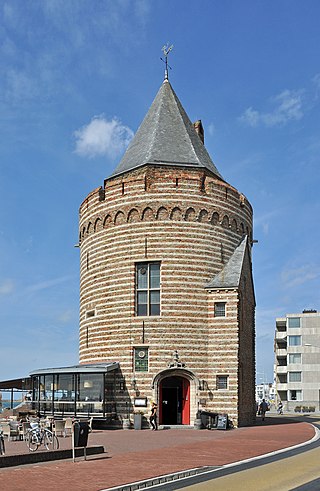
The Prison Tower on the boulevard in Vlissingen, in the Dutch province of Zeeland, is a remnant of the Westpoort from the 16th century. The tower, which is also called the 'Bomb-Free', is alternately built of layers of brick and natural stone and has a pointed roof. Nowadays, the national monument is used as a café-restaurant.
7. Het Wooldhuis
The Wooldhuis is a monumental villa at the head of the Boulevard Evertsen in Vlissingen, in the Dutch province of Zeeland. The villa was built in 1931-1932 to a design by architect Dirk Roosenburg, commissioned by the mayor of Vlissingen, C.A. van Woelderen. The ensemble consisting of Wooldhuis, the adjacent garden and garden wall and the associated service residences Waailust and De Zandlooper have been national monuments since 1997.
8. Oostbeer
The Oostbeer in Vlissingen, in the Dutch province of Zeeland, is a Napoleonic fortification that served to separate the water in the moat around the city from the seawater and thus prevent the moat from emptying at low tide.
9. Sint Jacobskerk
Saint James the Great Church is a large Protestant church in the city of Flushing, Netherlands. The building is on the Old Market ; around are the streets called Branderijstraat and Lepelstraat. The original Roman Catholic church of the city, it has belonged to the Dutch Reformed Church since 1572, which became the Protestant Church in the Netherlands in 2004.
10. Oranjemolen
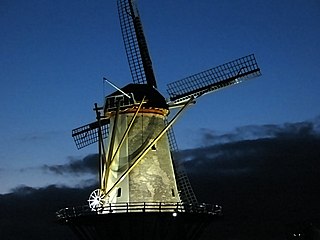
The Oranjemolen is a flour mill and former peeling mill on the Oranjedijk in Vlissingen, in the Dutch province of Zeeland. Due to its location, this mill is both a good wind catcher and an eye-catcher. It is a tower mill that was described in 1699, and must therefore have been built earlier. Since 1968 the mill has been owned by the municipality of Vlissingen. It is covered with roofing felt and has a radius of 24.50/24.60 meters. Since 2014, the mill has been able to grind and is still used to grind grain on a voluntary basis. Of the 23 city mills in Vlissingen, the Oranjemolen is the only one left. It is the closest mill to the sea in the Netherlands. The mill has suffered from war violence several times. A bullet from the English fleet in 1809 is said to still be in the southwest side of the mill wall. Traces of the Second World War can also still be found - the Allies landed near the mill in 1944.
11. De Pere
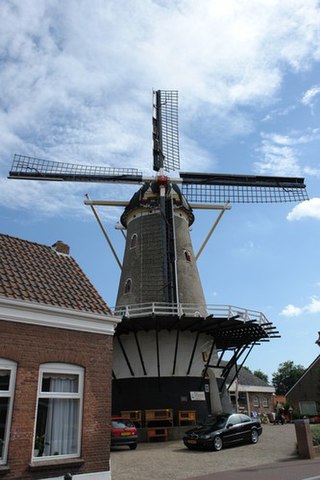
De Pere is a flour mill in Oost-Souburg in the Dutch province of Zeeland. The mill was built in 1725 to replace a post mill. Until the construction of the Canal through Walcheren, the mill stood on the territory of West-Souburg. The mill remained in use until 1966 on wind power, after which a modern grinding installation was installed in the mill. After purchase by the municipality of Vlissingen in 1983, the mill was put back into use in 1987. A professional miller uses the mill almost daily.
12. Lampsinshuis
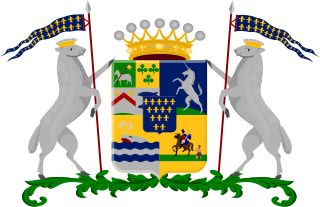
The Lampsins were an aristocratic family in the Netherlands, who attained notability in the trading and colonial worlds in the 17th century. The most notable members of the family were brothers Adrian and Cornelius Lampsins, who were granted letters of patent by Louis XIV and became the Barons of colonial Tobago in 1662.
13. MuZEEum
The Zeeuws Maritime MuZEEum is a maritime museum in the center of Vlissingen, situated on the marina of the city. It is the successor of the Stedelijk Museum in Vlissingen. It is housed in a building once owned by the Lampsins family, prominent in the shipping business in the 17th century.
14. Draaibrugpad
The Swing Bridge Souburg is a swing bridge that connects the villages of Oost-Souburg and West-Souburg in the Dutch municipality of Vlissingen. The bridge is located over the Canal through Walcheren. The movable part is a two-arm swing bridge of 481/2 meters long, with an approach bridge of 191/2 meters long on the Oost-Souburg side. Both are designed as truss bridges.
Share
How likely are you to recommend us?
Disclaimer Please be aware of your surroundings and do not enter private property. We are not liable for any damages that occur during the tours.
